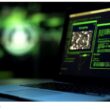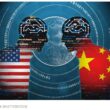A history lesson
The Founding Fathers were utterly amazing. The U.S. Constitution and the Bill of Rights, authored more than two centuries ago, have stood the test of time, and stand as monuments to the prescience of Messrs. Madison, Washington, Franklin, Hamilton, et al.
The balance they achieved — on multiple levels — in adopting the representative democracy model for their fledgling country is astounding. They established three branches of government at the federal level to keep all branches in check; limited the power of the federal government — in stark contrast to the monarchies that dominated Europe at the time — by ensuring that most governance would occur at the local and state levels; and ensured that the interests of less populous and less affluent states would be served by creating both the Senate and the House of Representatives.
The United States at the time of the Constitution’s ratification in 1788 was — and still is — a mixed bag. Some states were small in terms of area and population, while others had lots of people and plenty of room to grow. Some boasted diverse economies fueled by already large — for the time — and fast-growing cities, while others primarily were agrarian. The Founding Fathers instinctively knew that the more populous states deserved a loud voice in the legislative process. But they also knew that voice couldn’t be so loud as to drown out the smaller states. Their solution to create separate houses of Congress was brilliant.
I thought about the Founding Fathers as I read this edition’s cover story, which provides insight into the mobile voice and data industry’s standards-development process. As contributing writer Lynnette Luna reports, one of the big problems currently afflicting standards development is political gamesmanship, due in large measure to the voting policies of the industry’s two sanctioned standards bodies, the Institute of Electrical and Electronics Engineers and the Telecommunications Industry Association. IEEE’s one person-one vote policy seems particularly troublesome. Concerns already exist regarding the potential for larger companies to gain unfair advantage by flooding the organization and its working groups with members instructed to do their bidding.
To its credit, IEEE appears to recognize that problems exist within its development and ratification procedures and seems willing to find solutions. That’s good news for everyone involved in the standards-development process — and for the industry they’re trying to serve.














